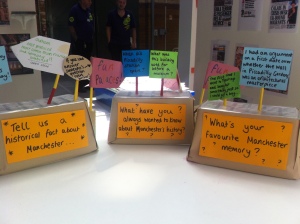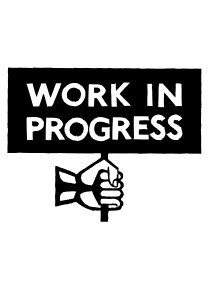 Now that Work in Progress has been packed away, the dust has settled and I’m back in the office after a few days off to recover I’ve had a chance to reflect on the 9 weeks of experimentation. We crammed a massive amount of activity into the programme, with three Microresidencies, 18 events and lots of meetings, conversations and impromptu lunch dates.
Now that Work in Progress has been packed away, the dust has settled and I’m back in the office after a few days off to recover I’ve had a chance to reflect on the 9 weeks of experimentation. We crammed a massive amount of activity into the programme, with three Microresidencies, 18 events and lots of meetings, conversations and impromptu lunch dates.
Without going into the nitty gritty of individual events, my reflections on the project as a whole are (in no particular order):
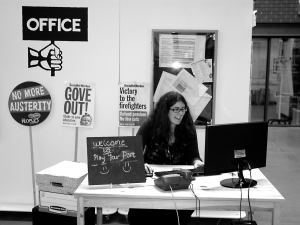 Whilst I still stand by my idea of having total transparency and ‘behind the scenes’ access to the project, I don’t think that having my office in the exhibition space worked particularly well. I’d anticipated having lots of in depth conversations with visitors about the project and encourage greater engagement with the themes covered. In reality, I probably had about 4 significant interactions with visitors over the course of the exhibition. The majority of questions I got were people asking me directions to the galleries and the toilets! I also think my presence confused some visitors as I had an email from someone who had visited the exhibition, wasn’t sure what was going on, and had seen me looking ‘very busy’ so didn’t want to interrupt me. I think perhaps a neon sign with ‘please speak to me!’ might have helped (but maybe would have looked a little desperate!) I also think that my being there put off visitors. Initially I had placed a suggestions box in the office space, which only seemed to fill up with responses on the days I wasn’t in the office. I therefore moved the box to the debate space, which increased responses. On a professional level, being away from our open plan office meant I was limited in informal interactions with colleagues which led to me feeling ‘out of the loop’. Now I’m back I can appreciate being able to chip into conversations and contribute to the cross-fertilisation of ideas.
Whilst I still stand by my idea of having total transparency and ‘behind the scenes’ access to the project, I don’t think that having my office in the exhibition space worked particularly well. I’d anticipated having lots of in depth conversations with visitors about the project and encourage greater engagement with the themes covered. In reality, I probably had about 4 significant interactions with visitors over the course of the exhibition. The majority of questions I got were people asking me directions to the galleries and the toilets! I also think my presence confused some visitors as I had an email from someone who had visited the exhibition, wasn’t sure what was going on, and had seen me looking ‘very busy’ so didn’t want to interrupt me. I think perhaps a neon sign with ‘please speak to me!’ might have helped (but maybe would have looked a little desperate!) I also think that my being there put off visitors. Initially I had placed a suggestions box in the office space, which only seemed to fill up with responses on the days I wasn’t in the office. I therefore moved the box to the debate space, which increased responses. On a professional level, being away from our open plan office meant I was limited in informal interactions with colleagues which led to me feeling ‘out of the loop’. Now I’m back I can appreciate being able to chip into conversations and contribute to the cross-fertilisation of ideas.- Even the title of the exhibition put off some visitors who didn’t realise it was an exhibition title and thought it was a sign meaning you couldn’t come in!
- The Microresidencies project was a massive highlight. I’m thrilled that the three projects were all so different, yet all encouraged participation, engaged visitors and were high quality. Using artists as mediators led to greater participation and seeing collections in a different way. I would love to be able to run this project again in the future, maybe with longer more in-depth residencies to provide a platform for early career artists who really engage with social issues.
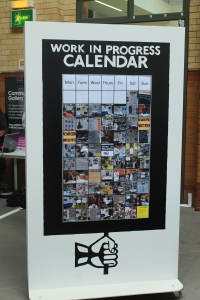 Having an evolving events programme was good as we could be responsive to contacts we made during the exhibition, but logistically it was difficult to have to constantly update our website, posters and interactive calendar and we found some events that didn’t have a long lead-in time weren’t very well attended.
Having an evolving events programme was good as we could be responsive to contacts we made during the exhibition, but logistically it was difficult to have to constantly update our website, posters and interactive calendar and we found some events that didn’t have a long lead-in time weren’t very well attended.- I wish I’d programmed more in the debate space and invited provocateurs to come in and ignite debate – perhaps with groups of young people.
- Having a broad brief asking people to play their part meant that we could engage with lots of groups and individuals that we may not have put together as part of our regular events programme.
- The space was used regularly by repeat visitors – I often came across people having impromptu meetings and one man came in every day to read the headlines. It makes me consider the role of museums in providing free spaces for reflection and whether we have a social responsibility to provide that kind of space?
- The space was also used regularly by other museum staff to have meetings outside of the ones we’d programmed for Play Your Part. (I think they appreciated the sofa!)
- The WiFi in the space had a terrible connection which meant that my planned Twitterfall had to be ditched in the first week. I also struggled with things like livetweeting events and posting photos on Flickr when the wifi failed.
- I need to remind myself that I’m just one person and I can’t do everything! In the latter stages of the exhibition I was definitely feeling fatigued from trying to cram in too many events and not having enough days off. The key to the project as a whole is getting everyone in the organisation on board so they think more ‘PYP’ so that there’s a lasting legacy once the project has ended. This will definitely be my focus for the final 6 months of Play Your Part.
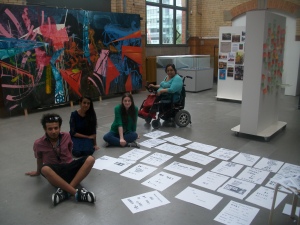
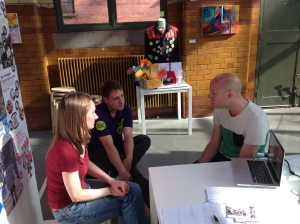
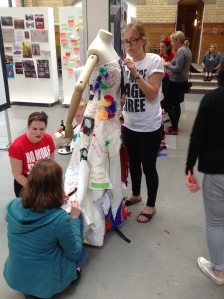
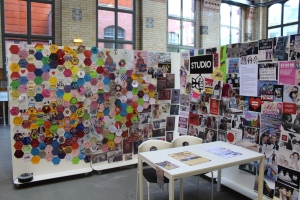
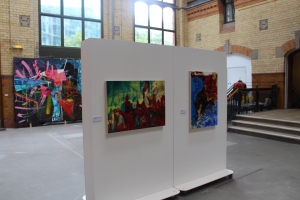
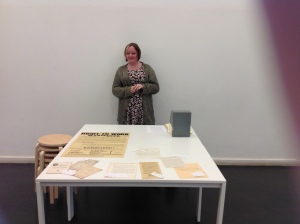
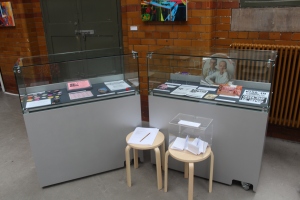
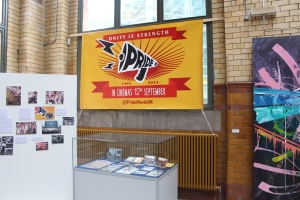
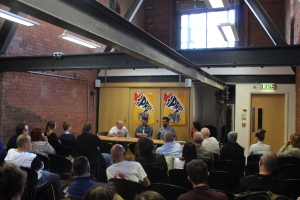
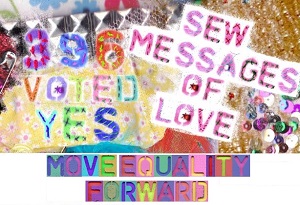
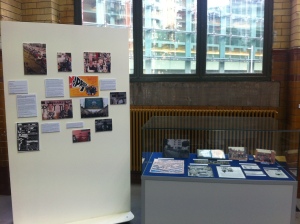

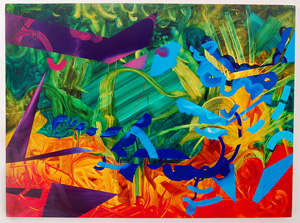 On Monday we (I say ‘we’, it was really Josh and Mark – I ‘supervised’) installed
On Monday we (I say ‘we’, it was really Josh and Mark – I ‘supervised’) installed 